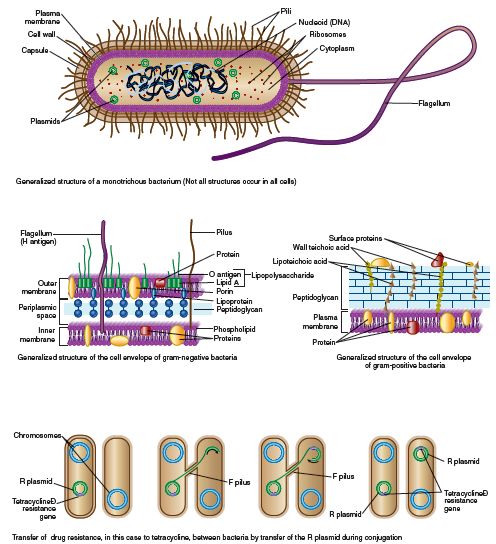* * *
A bacterial generic name placed on the list of rejected names by the Judicial Commission and the International Committee on Systematic Bacteriology of the International Association of Microbiological Societies. As a consequence, B. is no longer used in bacteriology. Identifiable organisms formerly placed in the genus B. have all been transferred to other genera. Specifically, B. anitratum is now known as Acinetobacter calcoaceticus; B. coli is now called Escherichia coli. [Mod. L. fr. G. bakterion, dim. of baktron, a staff or club]
* * *
bac·te·ri·um bak-'tir-ē-əm n, pl -ria -ē-ə any of a domain (Bacteria) of prokaryotic round, spiral, or rod-shaped single-celled microorganisms that may lack cell walls or are gram-positive or gram-negative if they have cell walls, that are often aggregated into colonies or motile by means of flagella, that typically live in soil, water, organic matter, or the bodies of plants and animals, that are usu. autotrophic, saprophytic, or parasitic in nutrition, and that are noted for their biochemical effects and pathogenicity broadly prokaryote
* * *
n.
* * *
bac·te·ri·um (bak-tērґe-əm) pl. bacteґria [L., from Gr. baktērion little rod] in general, any of the unicellular prokaryotic microorganisms that commonly multiply by cell division (fission) and whose cell is typically contained within a cell wall. They may be aerobic or anaerobic, motile or nonmotile, and may be free-living, saprophytic, parasitic, or even pathogenic, the last causing disease in plants or animals. See Plate 7 and see also Bacteria. bacterial adj
 PLATE 7 GENERALIZED STRUCTURES OF TYPICAL BACTERIAL CELLS AND TRANSFER OF A PLASMID BETWEEN BACTERIAL CELLS VIA CONJUGATION
PLATE 7 GENERALIZED STRUCTURES OF TYPICAL BACTERIAL CELLS AND TRANSFER OF A PLASMID BETWEEN BACTERIAL CELLS VIA CONJUGATION
Medical dictionary. 2011.